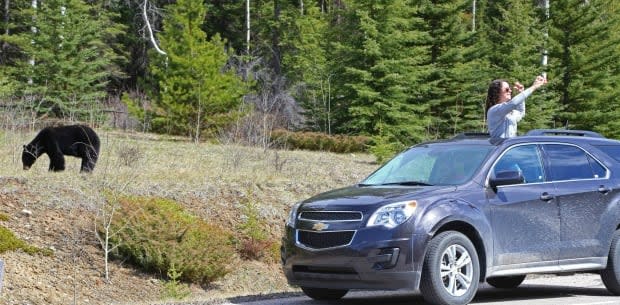Alberta bears are coming out of hibernation and they're hungry

It's springtime, which means hungry bears are now clambering out of hibernation dens in search of a feast before mating season, says a bear behavioural ecologist in Canmore, Alta.
Sarah Elmeligi has researched grizzly bears for 20 years, and is the author of the book What Bears Teach Us.
She says it's time again to keep bear safety in mind, especially now that Albertans will be enjoying the outdoors more with the spring thaw and enhanced COVID-19 restrictions.
The first bears out of the dens are the dominant male bears, then the lone bears or "subadults" and finally female bears with cubs will begin to emerge mid-April, she said.
"They have been in a state of really reduced physiological function for five months. So, their metabolic rate, their breathing rate, their heart rate, everything has slowed right down," she said on The Homestretch on Monday.
Bears will be sluggish due to months of not eating but that will fade, and their hunger will remain as they have "spent most of their fat reserves," said Elmeligi.
A hungry bear is not something you want to encounter.
What to do
Elmeligi says it is a "sensitive" time of year for the bear population in Alberta, and that people need to exercise caution when on trails and in Banff National Park and Jasper National Park.
She recommends packing bear spray, keeping dogs on leash, not hiking alone, making noise while hiking and sticking to designated trails.
Sighting bears while on the road happens often this time of year, she says, and in these cases she says do not linger, even if you are tempted to in order to snap a picture.
She says bears linger in the ditches near roads as the snow melts and dandelions pop up.
"It's really important in those cases to not stop your vehicle. Slow down, snap a quick photo on your phone and keep on going," said Elmeligi.
She says the bears are seeking to get as much nutrition as possible before mating season in June.
"Give bears as much space as possible, especially this time of year."

 Yahoo Finance
Yahoo Finance 